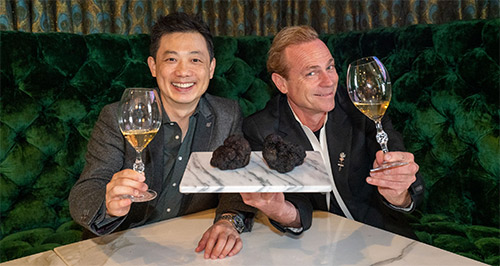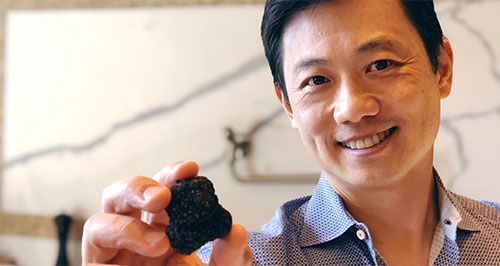Dr. Paul Thomas explains…
Throughout history, the origin and growth of truffles has been subject of many myths and legends. In arid regions, its often been claimed that when lightening hits the ground it causes truffles to form. The Bedouins of the Negev still refer to desert truffles as ‘the thunder fungus’. The Greek physician Pedanius Dioscorides believed truffles to be a form of tuberous root.
The road to understanding the biology of Tuber species has been a long one. Despite their previously unknown biology, there were some early truffle cultivation attempts with varying levels of success. However, it wasn’t until the 1970s and with the work of a number of dedicated researchers, that a more informed approach was employed. These early experiments kick-started what is, today, a global agricultural movement to produce truffles, which has been so successful that in some regions, such as France, over 95% of the annual truffle production is from cultivated orchards. However, despite these technology-led successes, there have also been many failures. Although our understanding of the ecological parameters needed for truffle cultivation, such as climatic conditions, soil structure and soil pH for many Tuber species is good, there has been little consensus on the correct management methods for different on-site conditions.
A genetic leap, sex and a new understanding
A new genetic understanding is finally answering important questions. In 2010 the genome of Tuber melanosporum (aka black winter Périgord) the world’s most commercially valuable cultivatable truffle species, was sequenced for the first time allowing an opportunity to investigate in greater depth than ever before the biology of these expensive fungi.
Essentially, we now know that truffles belong to a group of fungi whose majority have spores that develop sexually and that T. melanosporum requires a mating partner. Through this leap in the understanding of its sexual reproduction we begin to build a picture in which T. melanosporum is not a lonely fungus, reproducing by selfing, but instead demands, seeks out, and recognizes opposing mating types.
The exciting challenge moving forward is to apply this new understanding to truffle cultivation.
Stay tuned as we incorporate this new science and apply it to truffle cultivation.



